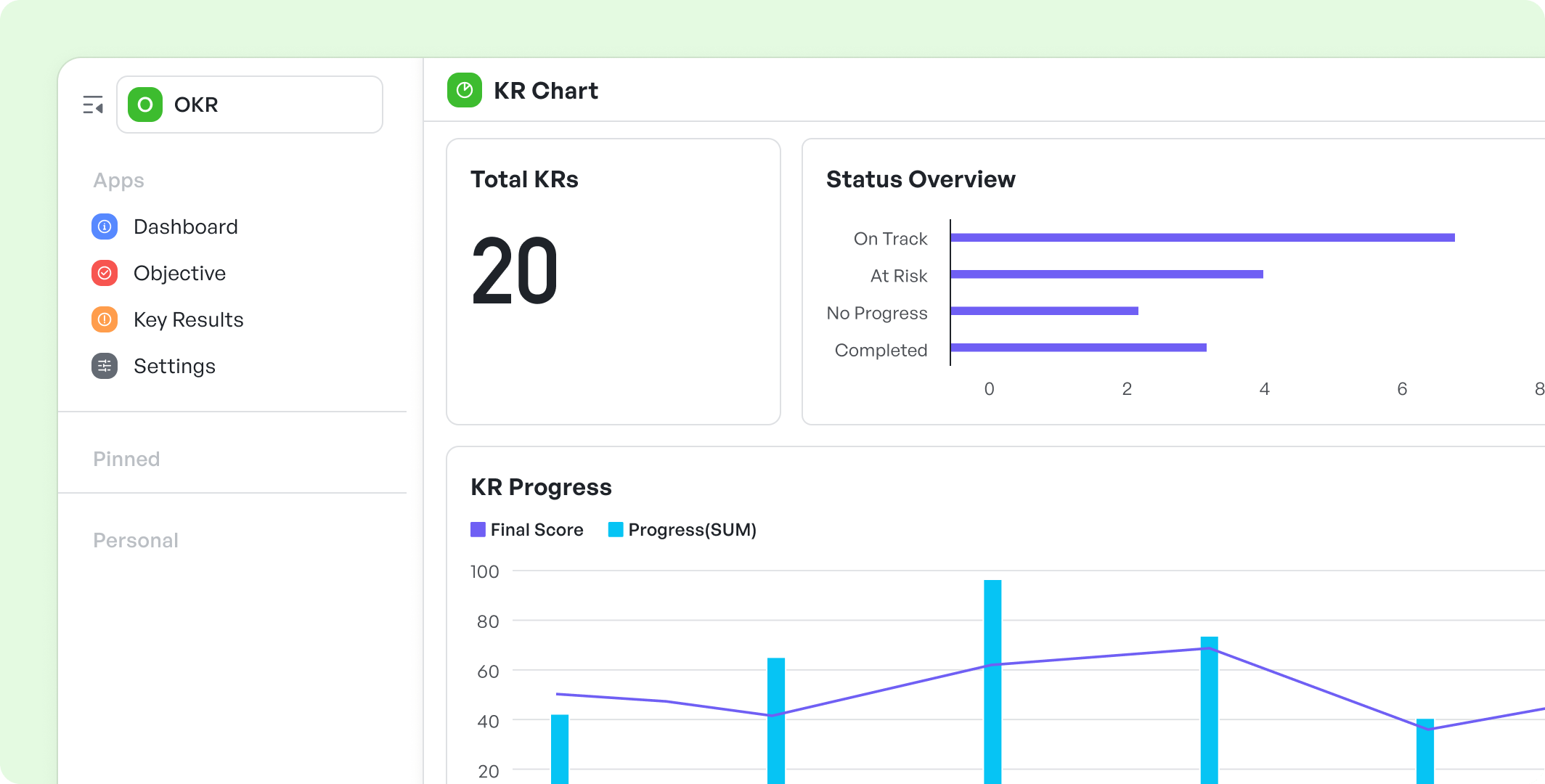Introduction
- It provides a clear framework to help teams and individuals define goals and key results.
- It ensures consistency in goal-setting and communication across the organization.
- It focuses on the most important objectives, avoiding distractions and unnecessary resource allocation.
OKR Breakdown
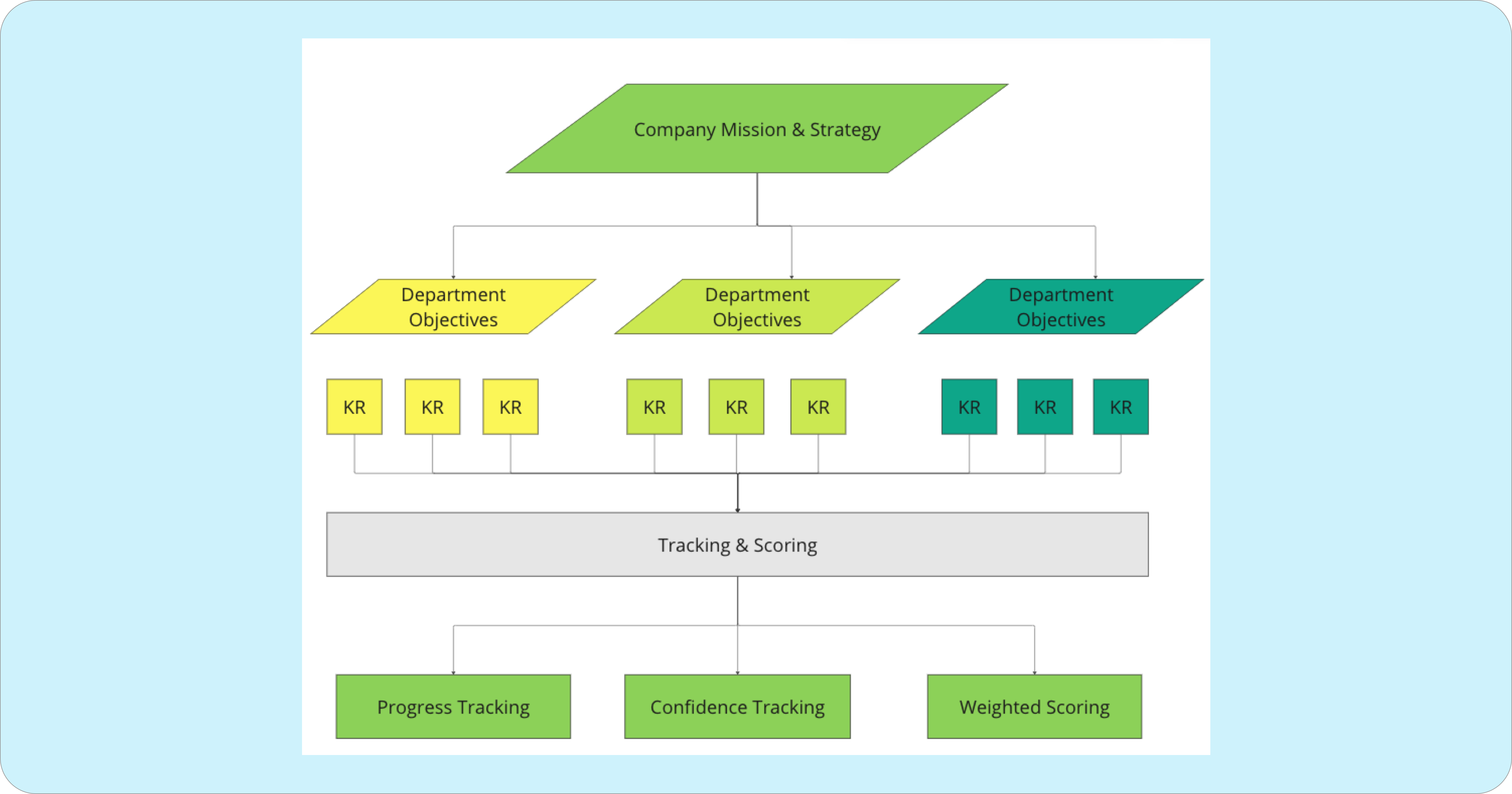
250px|700px|reset
Company Mission
To ensure success, it is essential to identify your company's goals before setting OKRs. Start by establishing the company's overall mission, which will provide a basis for the goals that need to be set and ensure they are in line with the company's mission.
Department Objectives
The objectives should be SMART (Specific, Measurable, Achievable, Realistic, and Time-bound)and should also be challenging enough to stretch the team.
Personal Key Results
Breaking down objectives allows for setting measurable and quantifiable key results to track progress and quantify success. This helps individuals better understand their work objectives and responsibilities, and contributes to the company's goals.
Get Your OKR Template in Meegle
- Create an Objective
- Create an Objective
Click Objective from the side navigation >> Click New Objective >> Fill out the detail page
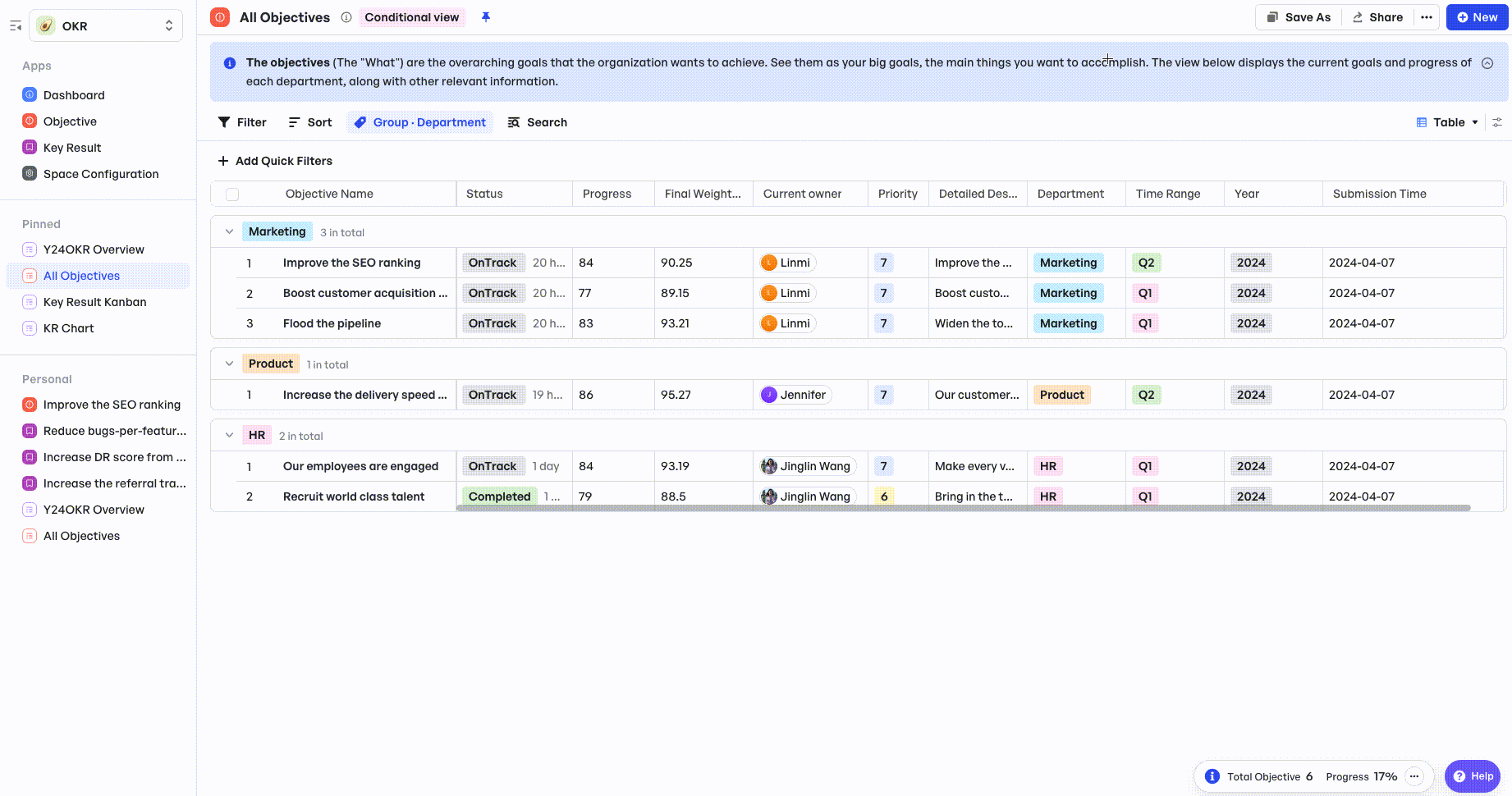
250px|700px|reset
- Break Down Objectives Into Key Results
- Break Down Objectives Into Key Results
The Key Results tab allows the current objective to be broken down into multiple KRs to make achieving the objective easier.
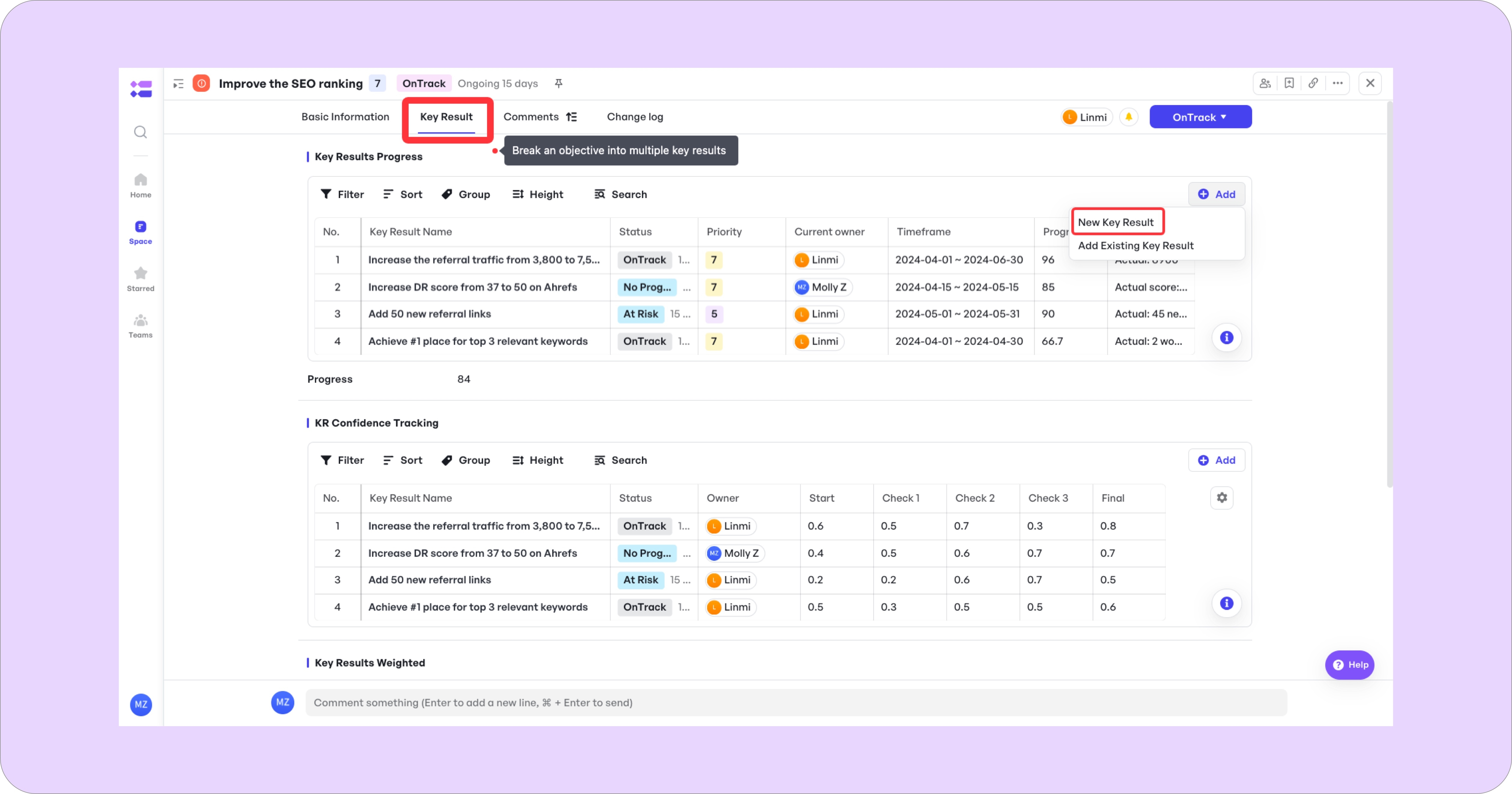
250px|700px|reset
- Start the Tracking Process
- Start the Tracking Process
You can enter basic information, track progress, analyze influencing factors, and perform confidence tracking and weighted scoring for each KR.
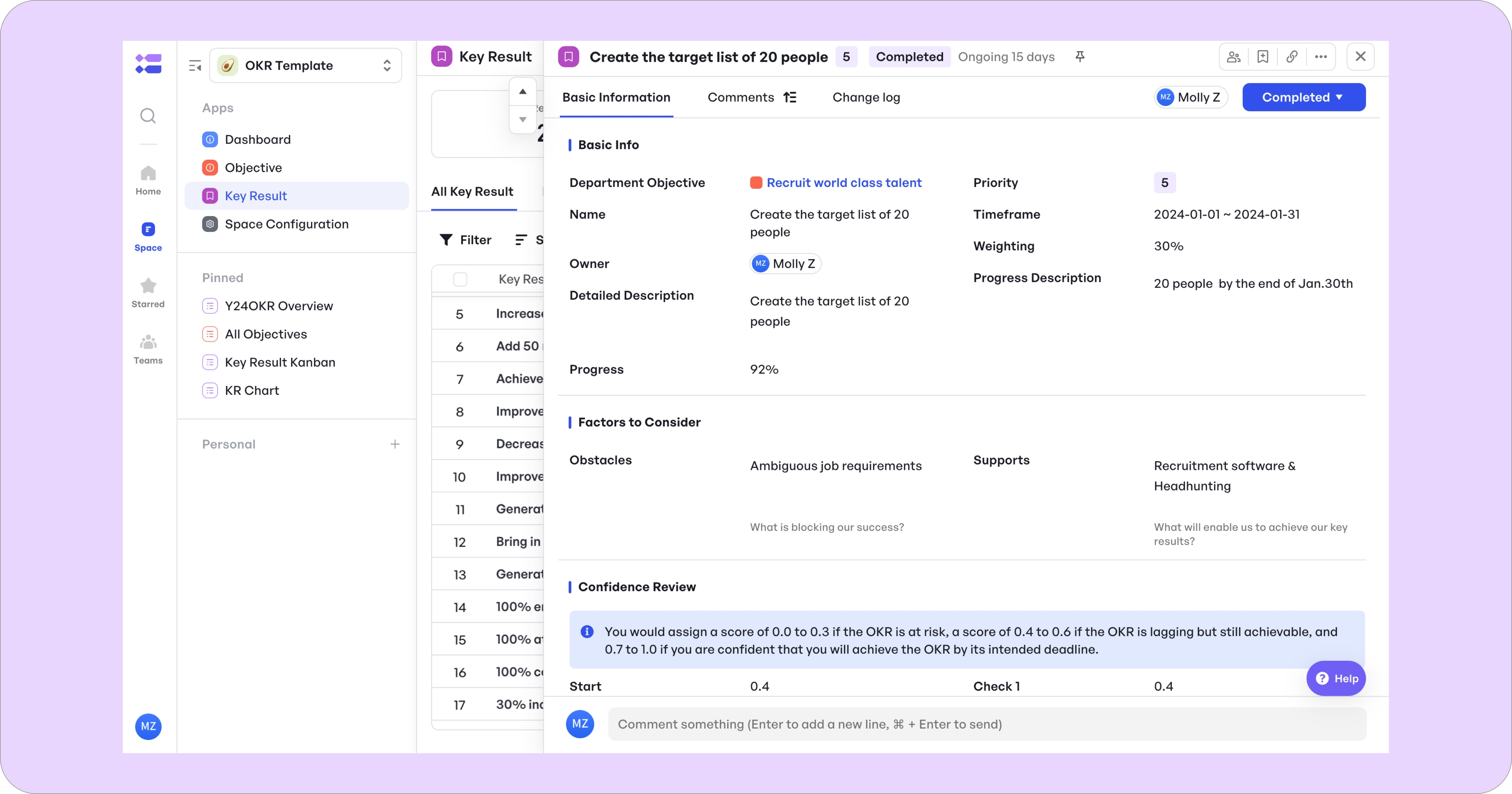
250px|700px|reset
Explore More Functions of the Meegle OKR Template
- Formula Calculation Fields
- Formula Calculation Fields
Fill in the formula calculation fields of key results, the objective progress could be generated automatically.
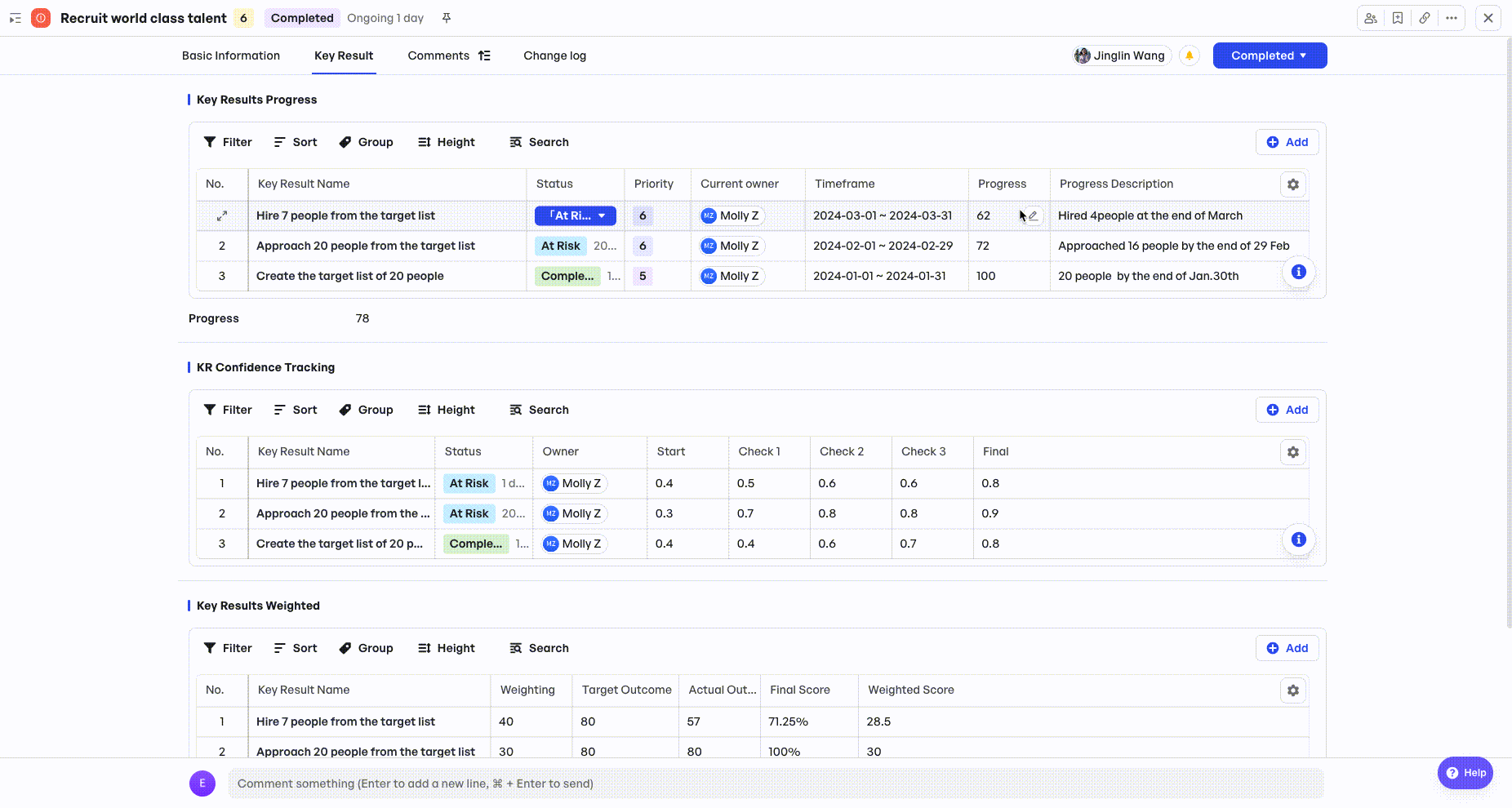
250px|700px|reset
- Set Group Condition
- Set Group Condition
By using multi-level grouping, the company can summarise and display the annual OKRs, allowing for a clear view of each department's goal dismantling and actual progress.
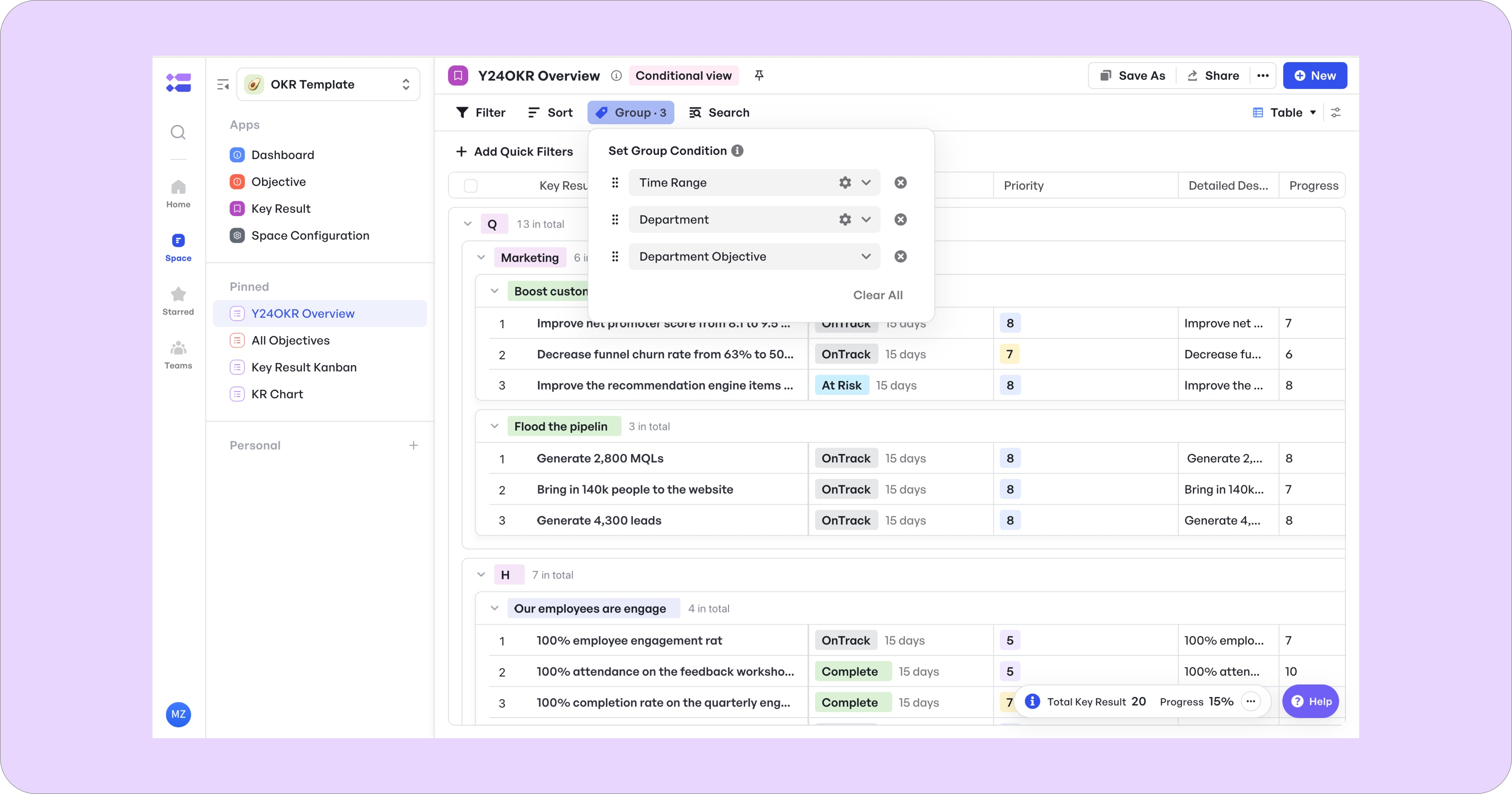
250px|700px|reset
- Key Result Kanban
- Key Result Kanban
Provides an overview of all team members' key results and their progress.
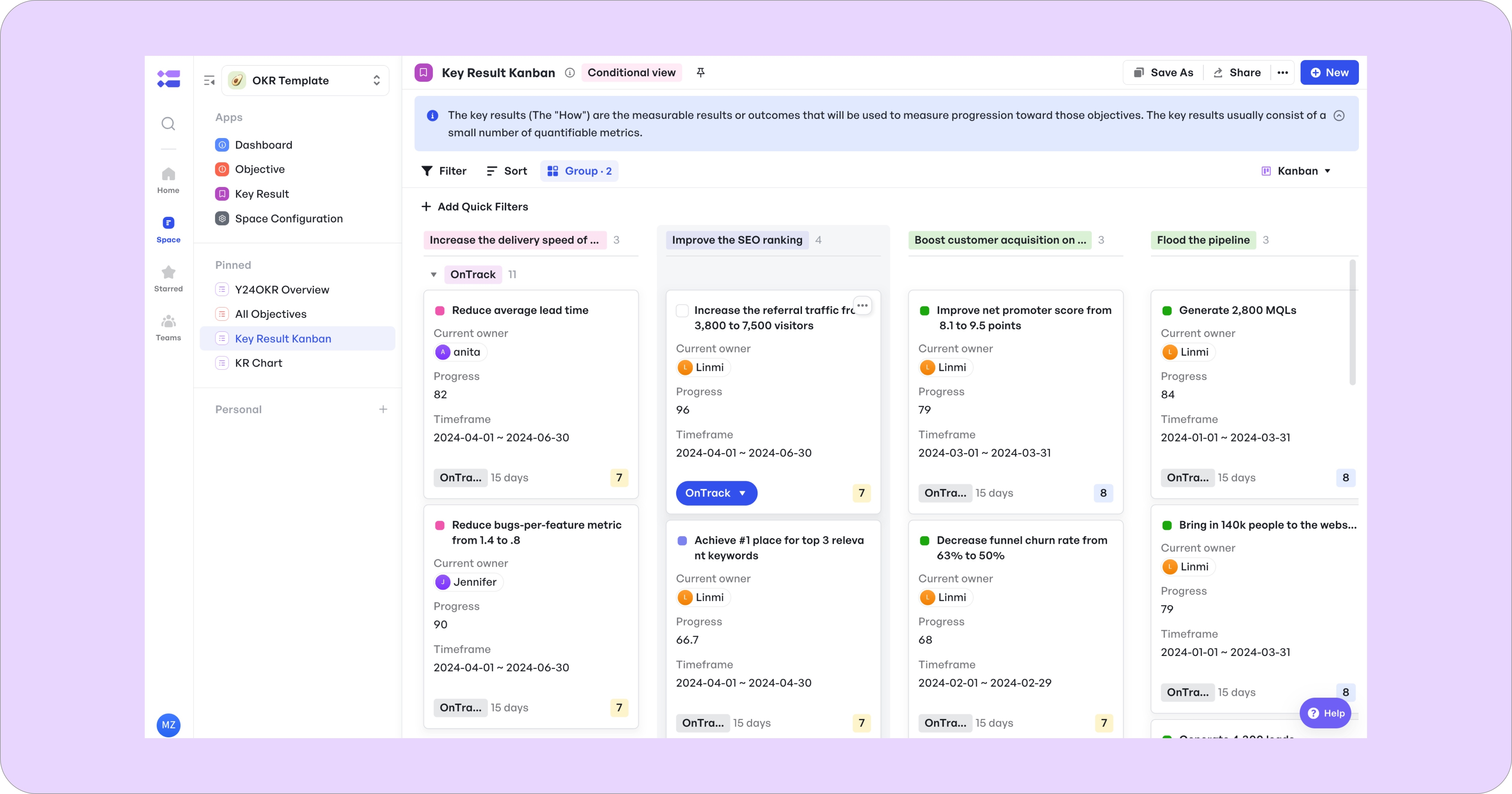
250px|700px|reset
- The KR Reporting Charts
- The KR Reporting Charts
Present a visual summary of the progress, displaying a dashboard that indicates the current status of objectives and key results for a specific timeframe. This view allows for a quick overview of progress, highlighting areas that require attention.

250px|700px|reset
Why Choose Meegle?
What distinguishes Meegle's templates from other templates? What makes Meegle superior?
FAQ
- How do OKRs differ from other goal-setting frameworks?
- How do OKRs differ from other goal-setting frameworks?
OKRs focus on setting ambitious, measurable goals that challenge teams and individuals to stretch their performance. Unlike some frameworks that might focus on tasks, OKRs are outcome-focused, emphasizing the importance of setting and achieving high-impact results.
- How often should OKRs be set and reviewed?
- How often should OKRs be set and reviewed?
OKRs are typically set on a quarterly basis, allowing for agility and rapid adjustments to changing priorities. However, it's crucial to review progress regularly, often monthly or even weekly, to ensure alignment and make necessary adjustments.
- Can OKRs be used for performance evaluation?
- Can OKRs be used for performance evaluation?
While OKRs can inform performance discussions by providing clear metrics on outcomes and achievements, they are primarily a tool for setting and communicating strategic objectives rather than for evaluating individual performance.
- What makes a good Objective in OKR?
- What makes a good Objective in OKR?
A good Objective is ambitious, inspirational, and actionable. It should clearly communicate what you want to achieve and inspire motivation to reach the goal. Essentially, it sets the direction and vision for the Key Results.
- How many Key Results should be attached to each Objective?
- How many Key Results should be attached to each Objective?
Typically, each Objective should have between 2 to 5 Key Results. Having too many can dilute focus, while too few might not capture all the dimensions of the Objective fully. The key is to find a balance that covers the critical outcomes needed to achieve the Objective.
- Can OKRs change mid-cycle?
- Can OKRs change mid-cycle?
Flexibility is one of the strengths of the OKR framework. If priorities shift or if it becomes clear that an Objective is no longer relevant, adjustments can and should be made. This ensures that efforts are always aligned with the most current strategic goals. However, frequent changes should be avoided to maintain focus and consistency in direction.

